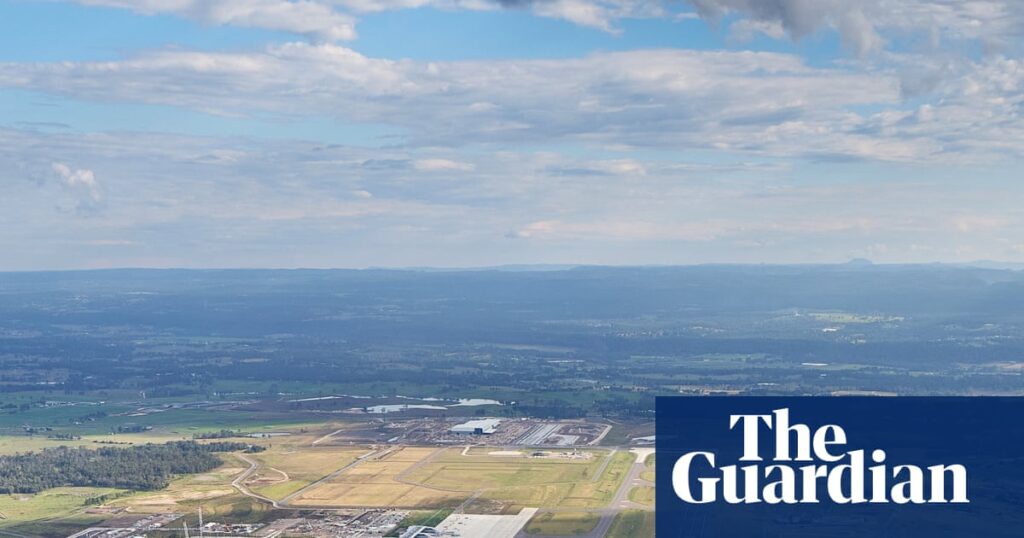
On the 25th anniversary of the Sydney Olympics, Sydney Kingsford Smith Airport, which once welcomed athletes and thousands of fans to the city, has declared an ambitious plan to dominate the air travel market. The privately owned airport’s 2045 master plan, released on Monday, aims to increase annual passenger numbers to 72 million, up from the current 41 million, within the next two decades. This expansion is described as the airport’s most significant since the 2000 games.
The announcement comes as Kingsford Smith prepares to compete with the new, government-owned Western Sydney Airport, scheduled to open in late 2026. The new airport aims for an impressive 82 million passengers annually by 2063. However, concerns about Western Sydney’s viability are already emerging, particularly regarding transport links. This raises the question: what does Kingsford Smith’s plan mean for the new contender in the west?
The Ambitious Plans
Sydney Airport’s draft 2045 master plan, open to feedback until December, outlines a vision to accommodate 36.4 million international passengers and 36.2 million domestic and regional passengers by 2045. Freight capacity is projected to grow to 1.4 million tonnes annually, more than doubling current levels.
The plan includes linking the two domestic terminals, T2 and T3, and adding up to 12 international gates to create a precinct from which regional, domestic, and overseas services all depart. Additionally, two further gates will be added to the T1 international terminal.
Meanwhile, Western Sydney Airport’s 2045 master plan, pending government approval later this year, details steps to reach 10 million total passengers by 2033 and 19.3 million by 2045. Its freight volumes are projected to rise to about 547,000 tonnes annually by 2045, with long-term forecasts at 1.8 million tonnes annually. The new airport will operate domestic and international services from a single terminal and just one runway until at least the 2050s.
The Competitive Edge
According to Nader Naderpajouh, head of the school of project management at the University of Sydney, competition is beneficial for both travelers and airlines. “Now we have an airport that is … pushing the other airport to also improve and expand,” he noted.
While Sydney Airport’s passenger numbers are forecast to increase by 75% by 2045, the number of flights will rise by 34%. Mathew Hounsell, a transport expert at the University of Technology Sydney, explains that these targets will be achieved by increasing passenger density and load, “which means cramming more people in and using wide-body aircraft.” This strategy may lead to more competitive fares but could compromise passenger comfort.
Sydney’s master plan also includes changes to flight paths, particularly to its main north-south runway, to accommodate Western Sydney Airport’s 24-hour runway. Sydney Airport’s three runways are subject to an 11:00 pm to 6:00 am curfew.
Hounsell suggests that curfew-free operations could mean small wins for Western Sydney, including the market for low-cost carrier flights to holiday destinations and connecting hubs in Southeast Asia and some international freight.
However, the airport’s distance from the CBD means it won’t significantly impact Sydney Airport’s lucrative routes to Brisbane, Canberra, and Melbourne.
Challenges and Concerns
Despite the ambitious plans, there are challenges ahead. Hounsell argues that Western Sydney Airport may be at a disadvantage due to its rival’s aggressive expansion strategy, characterizing it as a move to “kneecap” the new competitor.
Only four airlines—Qantas, Jetstar, Singapore Airlines, and Air New Zealand—have confirmed plans to use the new airport. Hounsell warns that the airport may need to “take a chill pill” regarding its 80 million passenger target.
Both airports face criticism for not adequately considering the impact of climate change on passenger demand. Rising house and energy prices, along with stagnant wages, could also affect passenger numbers. Sydney Airport’s spokesperson referenced the climate resilience strategy in its master plan, which aims for net zero emissions in operations by 2030. Western Sydney Airport plans to incorporate recycled materials and solar panels, supporting sustainable aviation fuel and electric ground services vehicles.
Looking Ahead
The timing of Sydney Airport’s expansion and its impact on the fledgling Western Sydney Airport is a topic of debate. Naderpajouh emphasizes that “there is never a right time for a project,” citing the Opera House as an example of a project that was initially over time and budget but is now a symbol of success.
As both airports forge ahead with their plans, the competition for Sydney’s airspace is set to intensify, promising significant changes for travelers, airlines, and the broader aviation industry in Australia.







